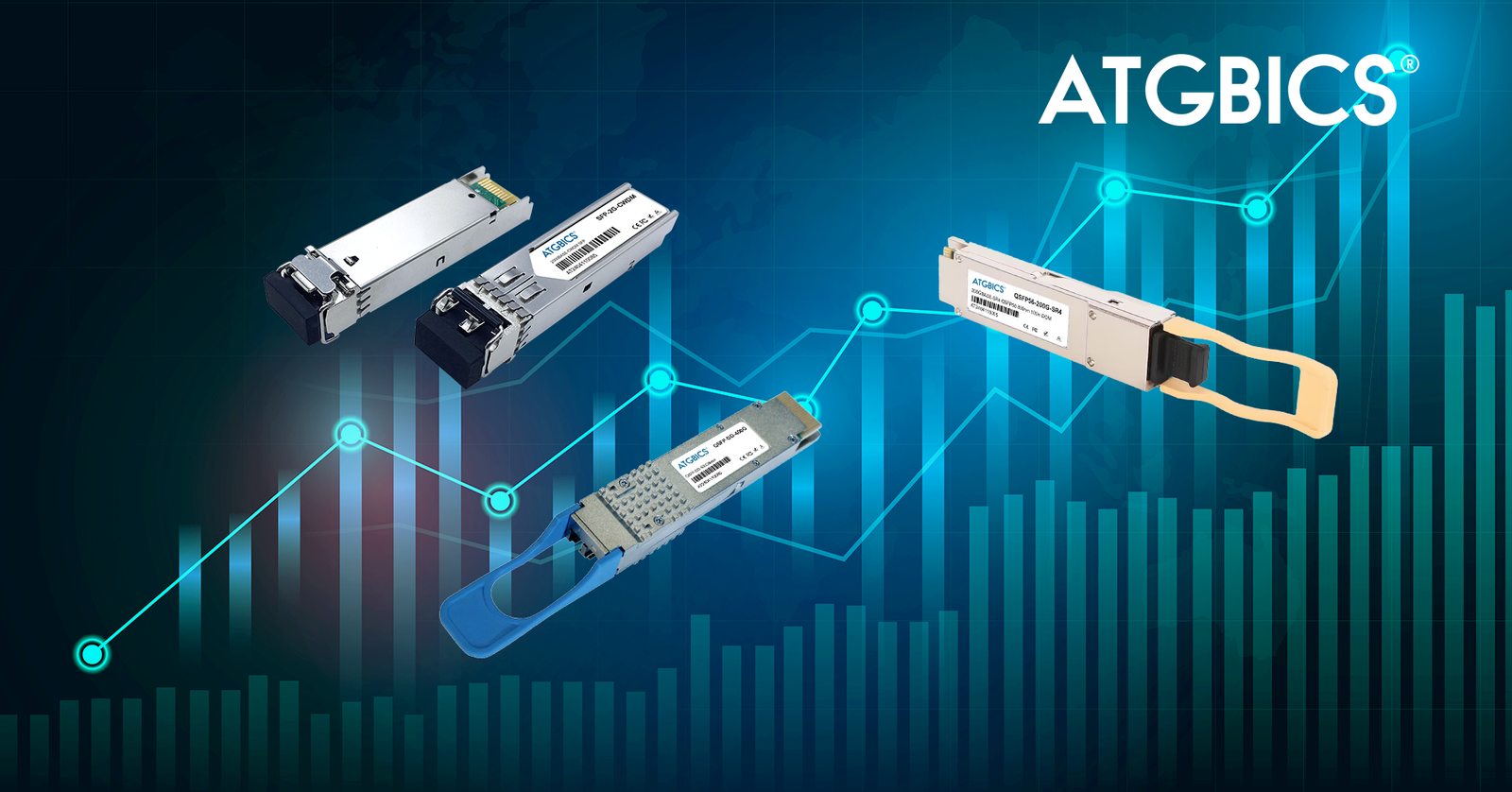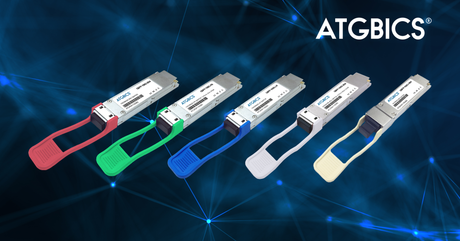The continued explosive growth in the optical transceiver market shows no signs of slowing down. The Optical Transceivers Market Size 2021-2025 Global Industry Market research report provides in-depth key analysis on the market status of Optical Transceivers manufacturers. The Optical Transceivers market revenue was 7820 Million USD in 2019, and will reach 16024 Million USD in 2025, with a compound annual growth (CAGR) of 12.7% during 2020-2025.
There are a range of factors which are driving this growth, not least the increasing investment in optical devices and the fast development of optical communications over recent years. The widespread adoption of cloud computing and increasing data traffic are also key factors. All of this is having a dramatic impact on the optical transceiver market.
What are optical transceivers?
Optical transceivers are small, yet highly powerful devices that transmit and receive data. In fibre optics, data is transmitted in pulses of light, travelling at very high speeds across extremely long distances. Optical transceivers play a key part in this fibre-optic network, converting electrical signals to light signals and vice-versa. They can be incorporated into network devices that can receive and transmit data.
What are some of the key market trends?
The Global Industry Market report identifies a number of key market trends that are driving the growth of the optical transceiver market. These include:
The adoption of electronic devices
At its most basic, the key driver in the growth of the optical transceiver market is the continued adoption of electronic devices. We may think that the market in the Western World is at a saturation point, and the main drivers of economic value will come from people upgrading their devices, but large parts of the globe remain untouched.
Increasingly, young and growing populations in Asia and Africa are adopting electronic devices. The growth is explosive and, as prices are driven down, this growth is likely to continue. The adoption of electronic devices is not only a reflection of growing economic power in many developing countries, but also a driver of economic growth creating more tech-savvy and plugged-in populations. For that reason, it’s often in the interest of governments to push digital uptake. This growth in uptake requires data centres, driving the optical transceiver market into new territories.
Expanding consumer demand
There has been massive growth in consumer demand for new connected devices and services This, in turn, is placing demand expansion in the cloud-based/ data centre infrastructure. Particularly important will be the adoption at scale of high data rate (above 100g) modules by telecom suppliers and big cloud operators.
To underline this, both data centre providers and telecom firms are increasingly moving toward the 800-Gbps optical ecosystem in an attempt to keep pace with the huge growth in data requirements.
Moving beyond 800 Gbps will be a challenge on existing equipment due to power consumption, thermal management and a need for higher electrical and optical densities onto current module form factors.
It’s worth noting that expanding consumer demand brings with it a range of challenges as well as opportunities. Companies will need to be nimble to stand any chance of meeting these demands, so the pressure to innovate is keen. Innovation is never without risk, however.
The need for higher storage capacity
There is colossal growth in the demand for both data storage and network traffic. This is placing greater demands on data centre providers, prompting them to look towards incorporating higher storage capacities. As a result, the number of hyperscale data centres is likely to increase considerably over the coming years.
With the widespread roll-out of 5G and technology such as the Internet of Things (IoT) the demand for data centres is expected to increase over the forecast period. Global investment in data centre expansion and new facilities is growing at a rapid rate in an attempt to keep up with global data demands. There’s little sign of this demand abating or levelling off any time soon.
The need for compact and energy efficient transceivers
With increasing data demand there is a need for ever more data centres. The existing infrastructure doesn’t have the capacity to cope with the increased scale and sophistication of what’s being asked of it. The vast increase in data usage brought about both by new technology such as 5G and IoT, along with growing numbers of consumers using electronic devices, raises serious concerns about sustainability.
The energy demands of data centres continue to increase as does their potential physical size. In response to this there is an increasing need for transceivers to be both compact and energy efficient while delivering in a way that meets the extra demands being placed on them. Older infrastructure will, in time, need to be replaced by more capable, streamlined and energy- efficient solutions.
Cloud computing and big data applications
The shift towards cloud computing and the expansion of big data applications has resulted in data centres needing to handle a doubling in traffic every 12 to 24 months. High bandwidth data transmission is needed while keeping a lid on costs, power consumption and the size of the data centre.
To achieve these conflicting demands it is critical that optical transceiver speeds are increased. This will largely be done through innovation in the field of optical interconnect technologies, with Silicon-Photonic as a crucial technology to address this particular challenge. The optical transceiver market is not only growing, this demand is also driving rapid innovation.
Huge growth across Asia Pacific region
The Asia-Pacific region is driving the increased demand for optical transceivers by data centre operators. Demand is particularly strong in China, where local governments are pushing a strategy that focuses primarily on the deployment of 5G and the development of cloud data centres.
In May 2020, the Chinese government announced that it was investing around £1.4 trillion over the coming years to 2025. The government called on urban government and tech giants such as Huawei to speed up the roll out of 5G wireless networks. This is expected to significantly boost the need for data centres and telecommunications infrastructure across the region. This is another key driver in the growth of the global optical transceiver market.
A competitive market
The optical transceiver market contains a number of significant players, such as II-VI Incorporated, Accelink Technologies, Huawei Technologies Co. Ltd, Broadcom Inc and Source Photonics. There is intense pressure to innovate, form partnerships and, in some cases, merge to increase both market share and geographical reach. These competitive pressures make the entire optical transceiver market incredibly fast-moving and dynamic. With increased demand for optical transceivers and more innovative solutions companies have to be agile in their response.
For instance, in 2019 Source Photonic announced an extensive portfolio of products serving 5G mid-haul application. This portfolio takes advantage of the company’s high-speed optical transceiver development and high-volume shipments into wireless, data centre and routing applications. This results in a comprehensive portfolio of optical transceivers supporting data rates 125mb/s to 400Gb/s, transmitting between 300m and 40km.
In 2020, II-VI Incorporated announced its high-speed indium phosphide (InP) electro-absorption modulated lasers (EML) for data centres and its 5G optical access infrastructure. These EML devices are designed for high signal integrity which enables transceiver modules operating at data rates of 100, 200, 400 and 800 Gbps. This makes them suitable for high-speed data centre connectivity and optical access networks that provide fronthaul, mid-haul, and backhaul connectivity to 5G wireless base stations.
Opportunities and challenges ahead
It’s clear that this is a time of rapid growth in the optical transceiver market. It’s fuelled by innovation and increasing consumer demand, and the industry is looking to balance growth with sustainability.
At AT-GBICS we specialise in optical transceivers manufactured using the highest quality components and strictly adhering to network equipment manufacturer specifications. We keep abreast of industry trends and can offer impartial expert advice.
Get in touch
Call +44 1202 424518 or email us via our Contact Page.
















